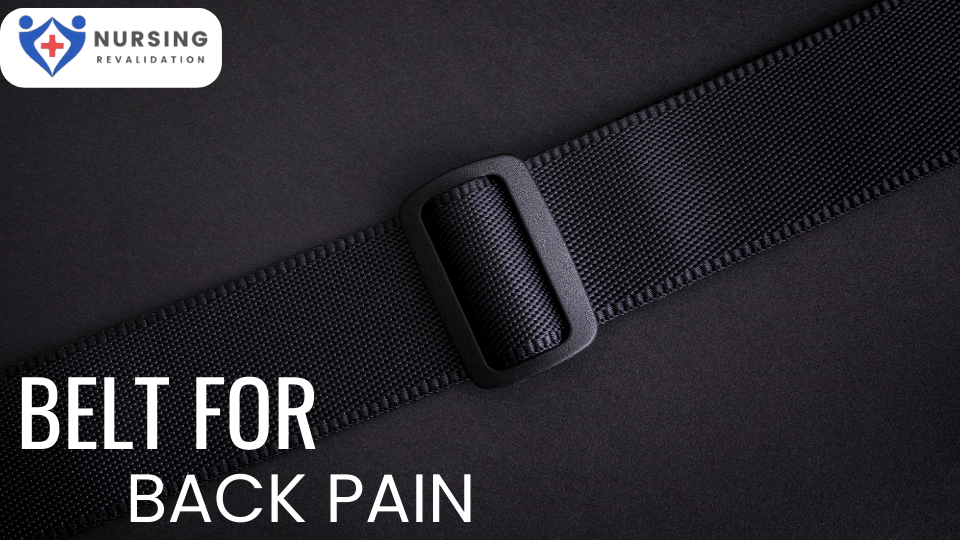Introduction
If you have ever experienced back pain, you know how debilitating and agonizing it can be. Back pain affects millions of people worldwide and can lead to a decreased quality of life, affecting daily activities such as walking, bending, or even standing for extended periods. While there are various treatments available for back pain, one treatment that has gained popularity in recent years is a belt for back pain. In this article, we will discuss everything you need to know about belts for back pain, including what they are, how they work, their benefits and drawbacks, and much more.
What is a belt for back pain?
A belt for back pain, also known as a back brace or lumbar support, is a device designed to provide support and relieve pressure on the lower back muscles. These belts are typically made of elastic, corset-like materials and have a Velcro or buckle closure system that allows for a snug fit around the waist.
Types of belts for back pain
There are various types of belts for back pain available on the market, each designed to address specific back conditions. Some of the most common types of belts for back pain are:
1. Sacroiliac belts
Sacroiliac belts are designed to stabilize the sacroiliac joint, located at the base of the spine. These belts are typically wider than other belts and provide firm compression to the lower back, reducing pain and inflammation.
2. Corset belts
Corset belts are designed to support the lumbar spine and lower back muscles. These belts are typically made of rigid materials such as plastic or metal and provide a high level of support and stability.
3. Elastic belts
Elastic belts are the most common type of belt for back pain. These belts are made of stretchy, elastic materials and provide a moderate level of support and compression to the lower back muscles.
How do belts for back pain work?
Belts for back pain work by providing support to the lower back muscles, reducing pressure on the spine, and stabilizing the sacroiliac joint. The pressure provided by the belt also increases blood flow to the affected area, promoting healing and reducing inflammation.
Benefits of using a belt for back pain
Belts for back pain can offer several benefits, such as:
- Provides support and stability to the lower back muscles, reducing pain and discomfort.
- Helps reduce pressure on the spine, improving posture and preventing further injury.
- Increases blood flow to the affected area, promoting healing and reducing inflammation.
- Can be worn discreetly under clothing, allowing for everyday use without drawing attention.
- Can help reduce the need for pain medication.
Drawbacks of using a belt for back pain
While belts for back pain can be beneficial for some people, there are also some potential drawbacks, including:
- May weaken the muscles if worn for extended periods, leading to a dependency on the belt.
- Can cause skin irritation or chafing if worn for long periods or in hot weather.
- May not provide sufficient support for severe or chronic back pain.
- May restrict movement and limit the range of motion, affecting daily activities.
How to choose the right belt for back pain
Choosing the right belt for back pain is essential to ensure maximum benefit and reduce the risk of further injury. Here are some factors to consider when selecting a belt for back pain:
- Type of back pain: Consider the type and location of your back pain to determine the type of belt that will provide the most support and relief.
- Material: Choose a belt made of breathable, moisture-wicking materials that will not cause skin irritation or chafing.
- Size: Ensure the belt fits snugly around your waist without being too tight or too loose.
- Closure system: Choose a belt with a Velcro or buckle closure system that allows for easy adjustment and a secure fit.

How to wear a belt for back pin
Proper use of a belt for back pain is essential to ensure maximum benefit and reduce the risk of further injury. Here are some tips for wearing a belt for back pain:
- Position the belt so that it covers the affected area of the lower back.
- Adjust the belt to fit snugly around your waist without being too tight or too loose.
- Wear the belt for short periods initially and gradually increase wear time as tolerated.
- Avoid wearing the belt while sleeping, as this can cause muscle weakness and dependency.
Alternative treatments for back pain
In addition to using a belt for back pain, several alternative treatments can help alleviate back pain, such as:
- Exercise and stretching
- Physical therapy
- Massage therapy
- Chiropractic care
- Acupuncture
- Pain medication
Conclusion
Belts for back pain can be an effective treatment option for some people experiencing back pain. However, it is essential to choose the right type of belt, wear it correctly, and use it in combination with other treatments in order to maximize its benefits and prevent further injury. While belts for back pain can offer support and relief, it is important to address the underlying cause of the pain and not rely solely on the belt for pain relief. There are also several alternative treatments for back pain that can be effective in reducing pain and improving function.
FAQs
Are belts for back pain suitable for everyone?
Belts for back pain may not be suitable for everyone, and it is essential to consult with a doctor or physical therapist before using one to ensure proper use and avoid exacerbating the condition.
Can wearing a belt for back pain cause muscle weakness?
Wearing a belt for back pain for extended periods can lead to muscle weakness and dependency on the belt. It is important to wear the belt for short periods initially and gradually increase wear time as tolerated.
Can belts for back pain be worn while sleeping?
It is not recommended to wear a belt for back pain while sleeping, as this can cause muscle weakness and dependency.
What are some alternative treatments for back pain?
Alternative treatments for back pain include exercise and stretching, physical therapy, massage therapy, chiropractic care, acupuncture, and pain medication.

